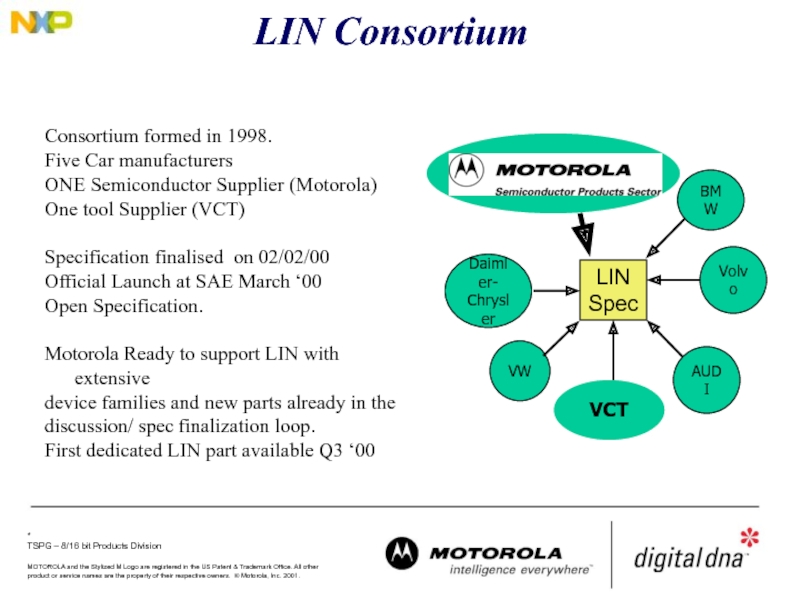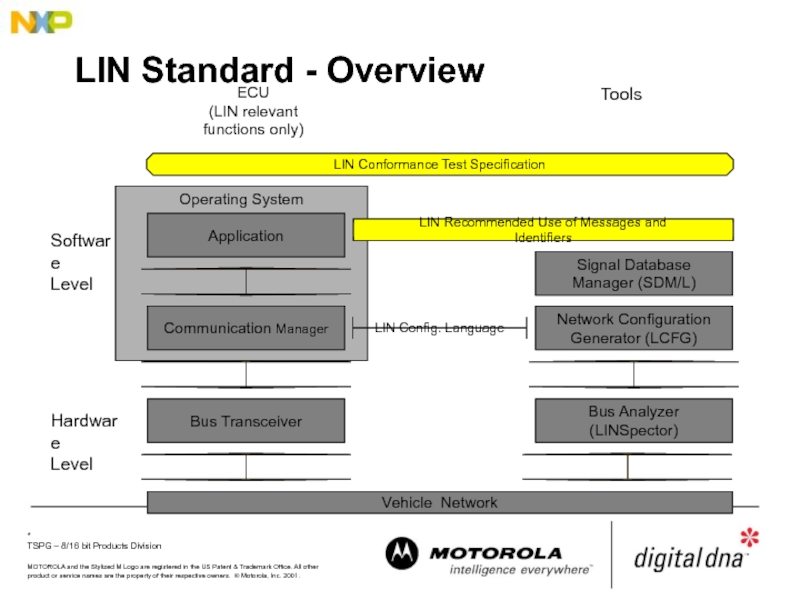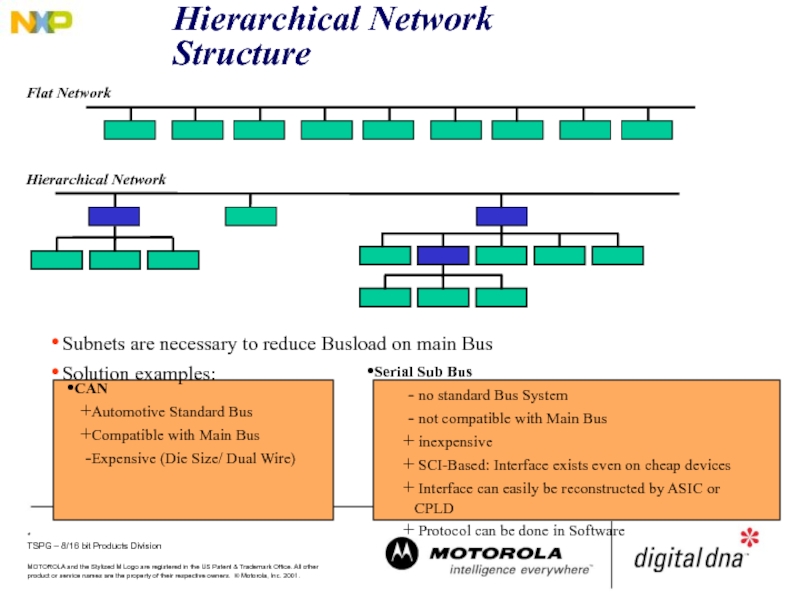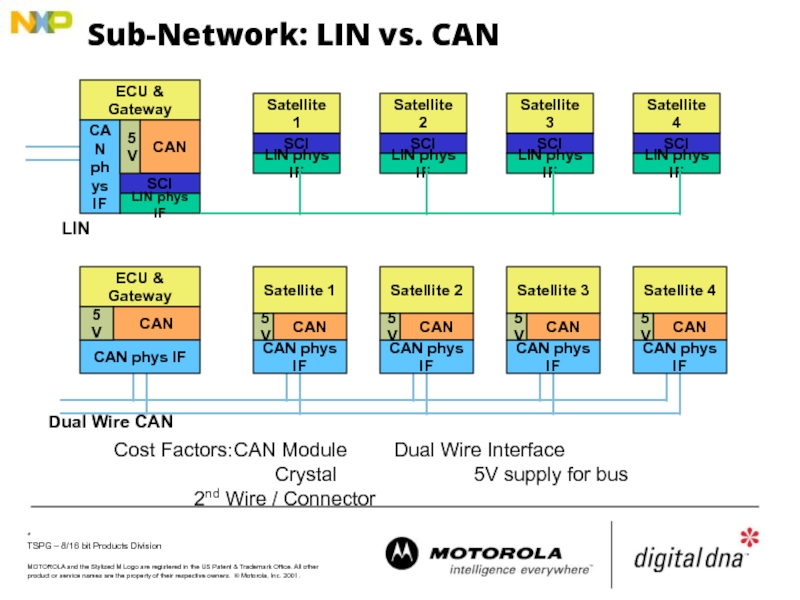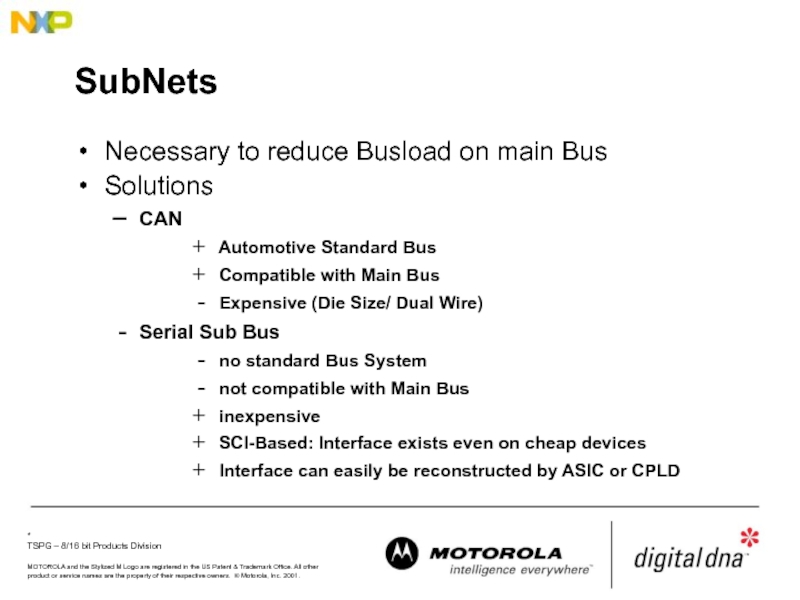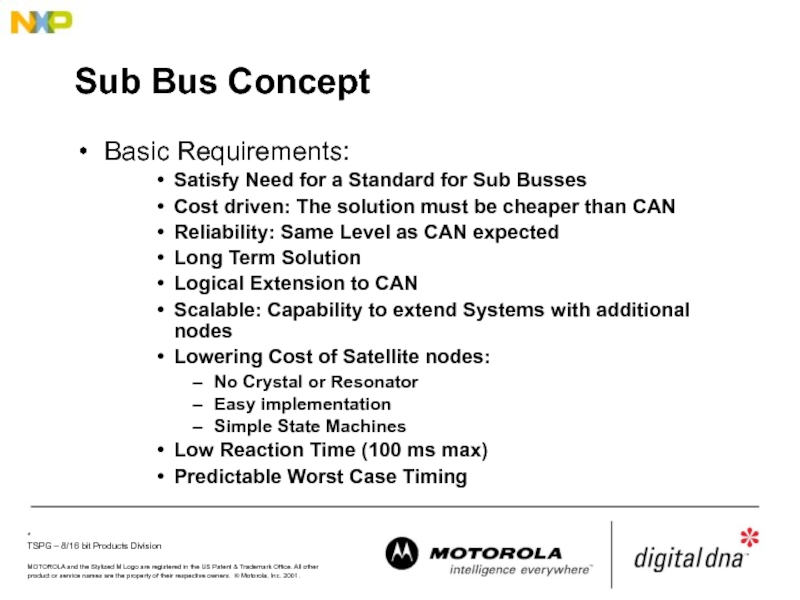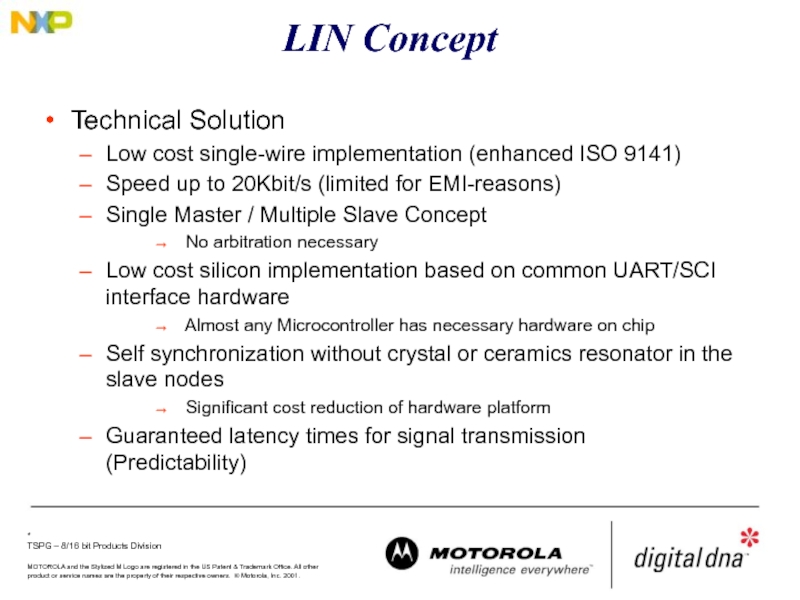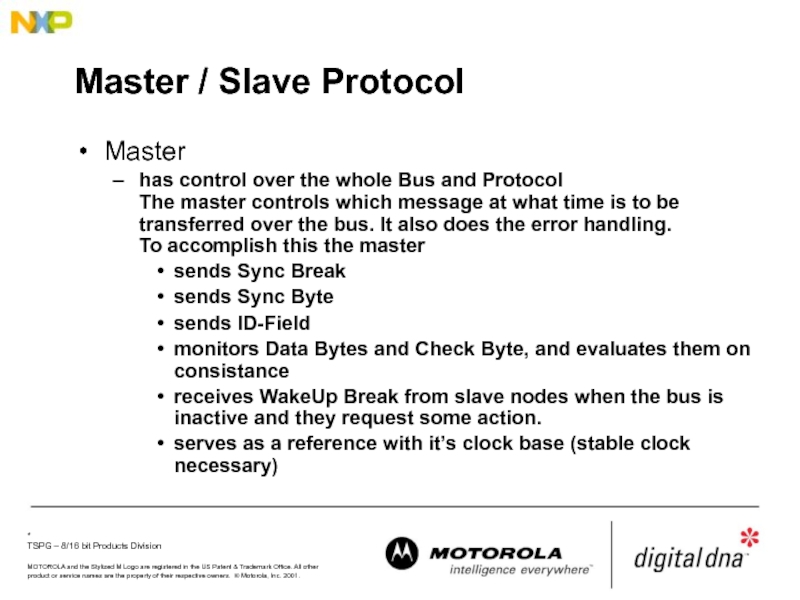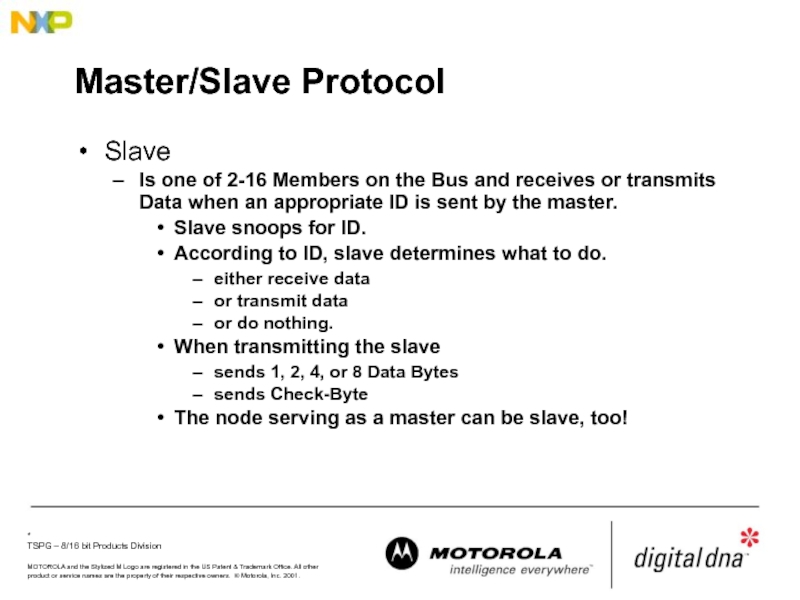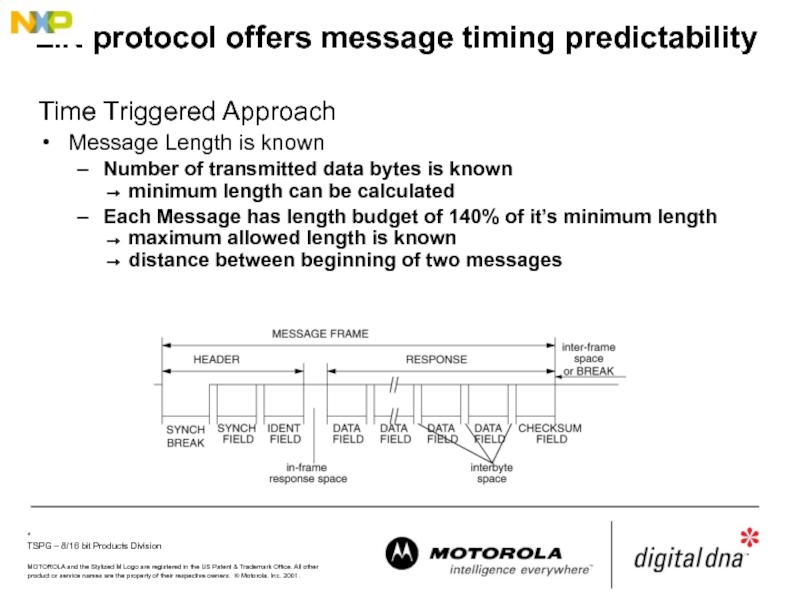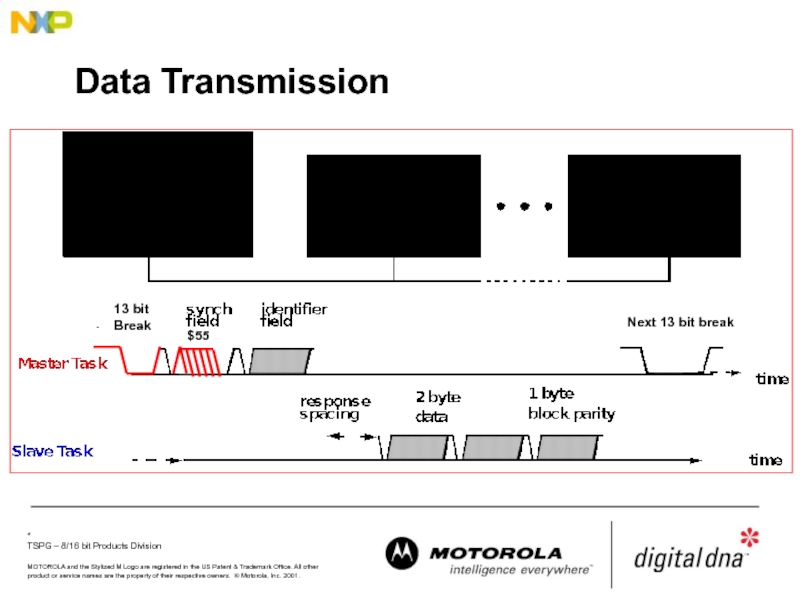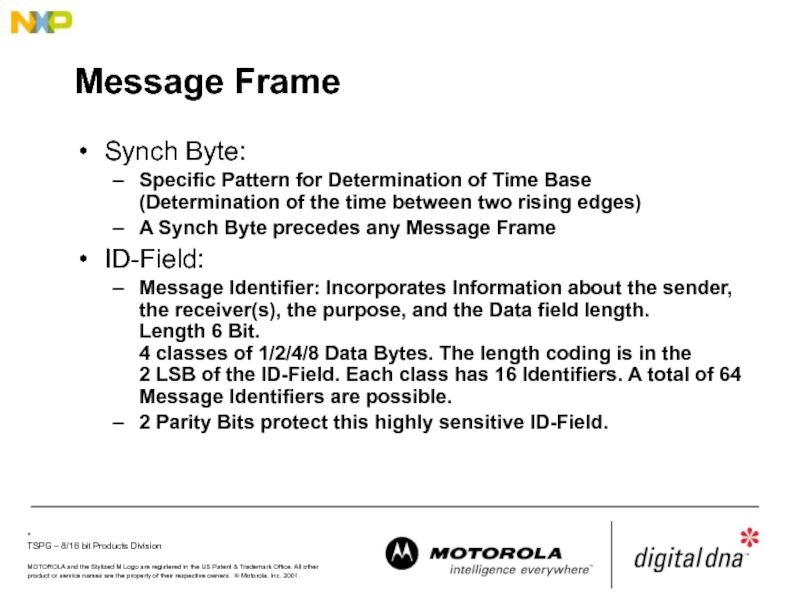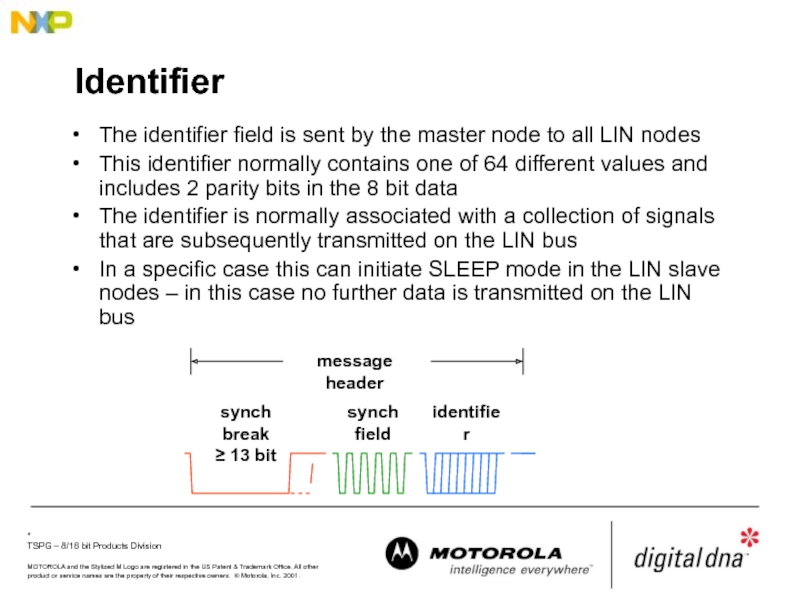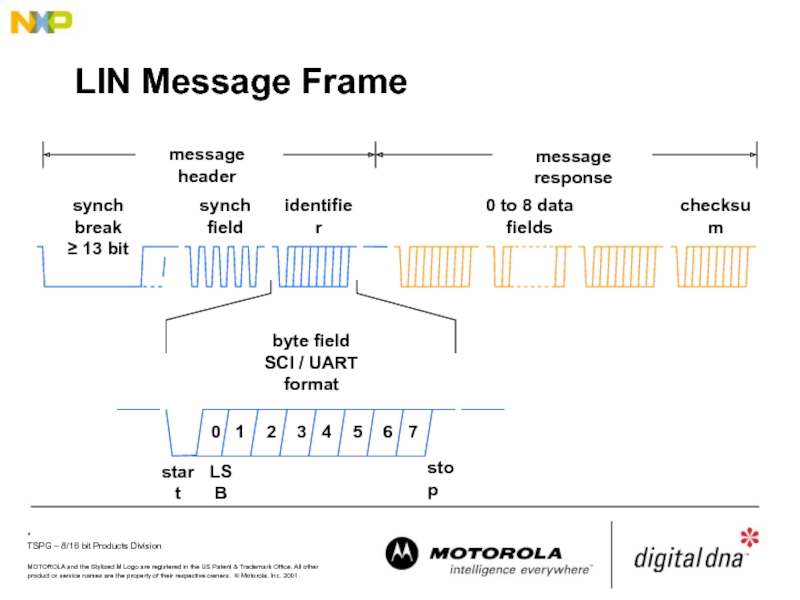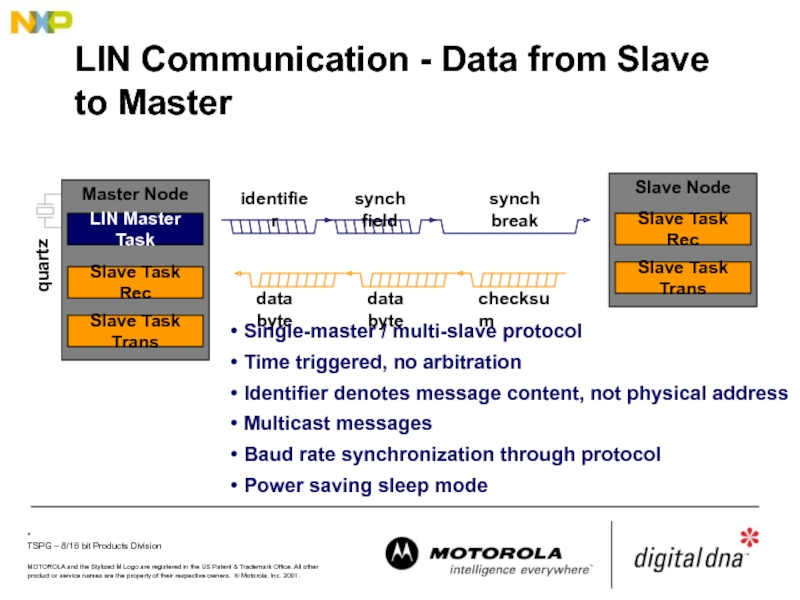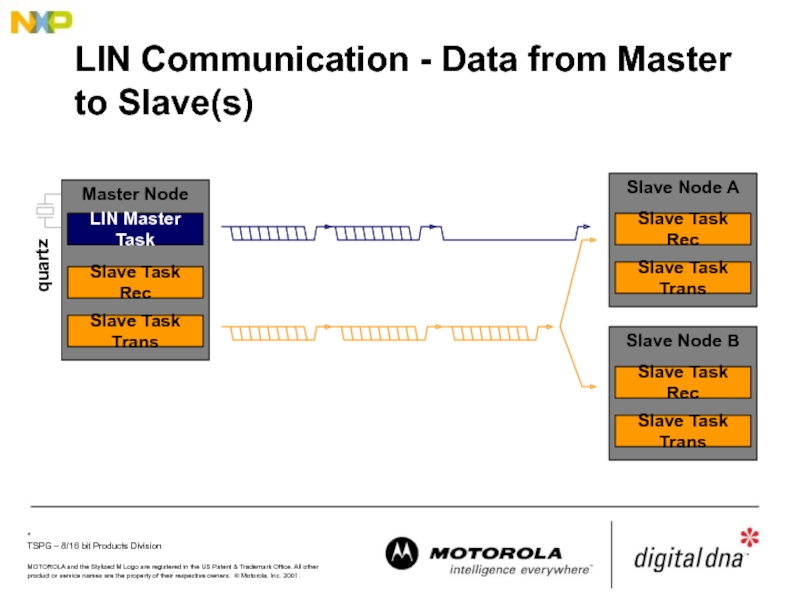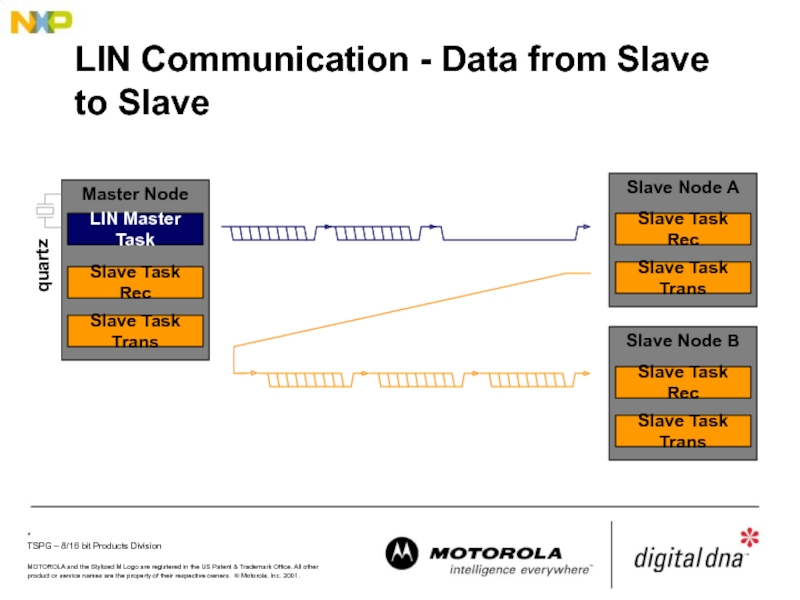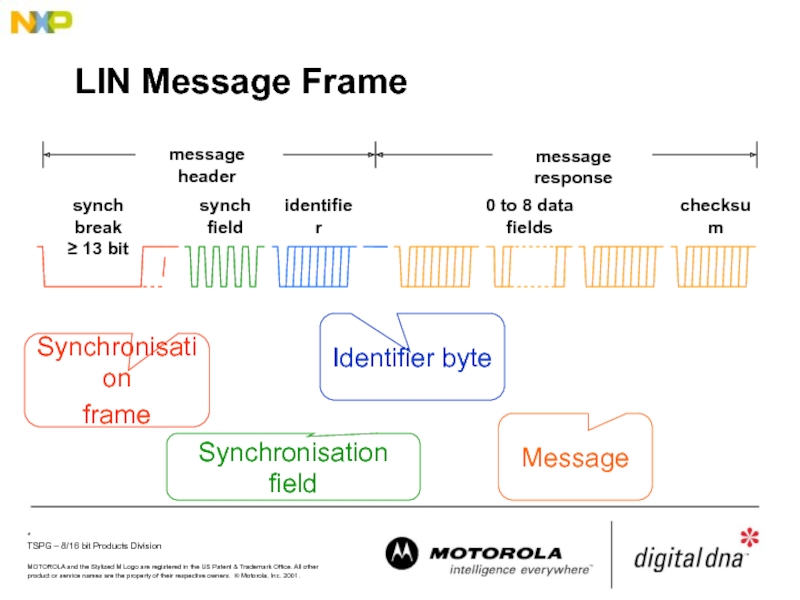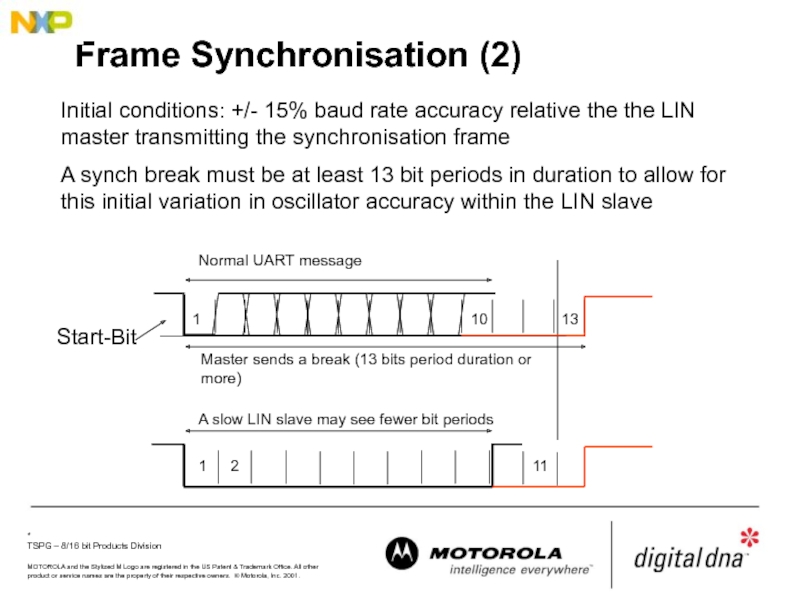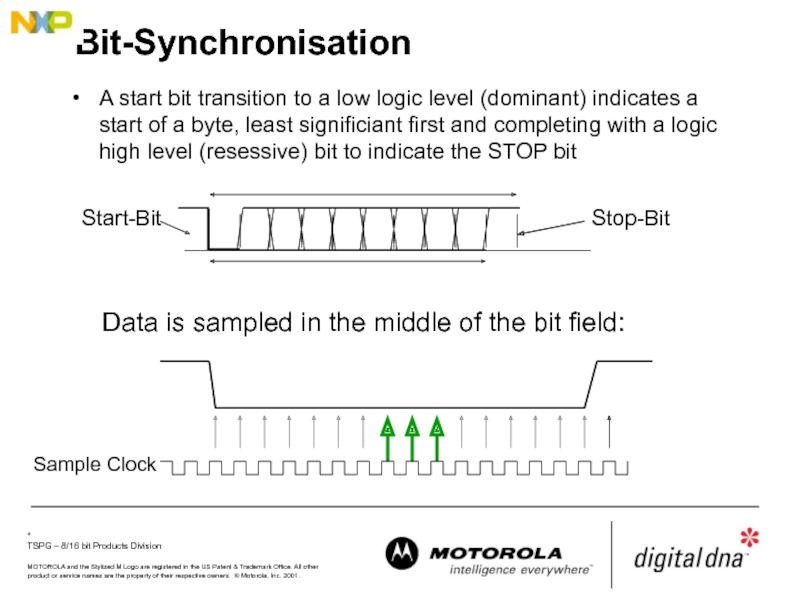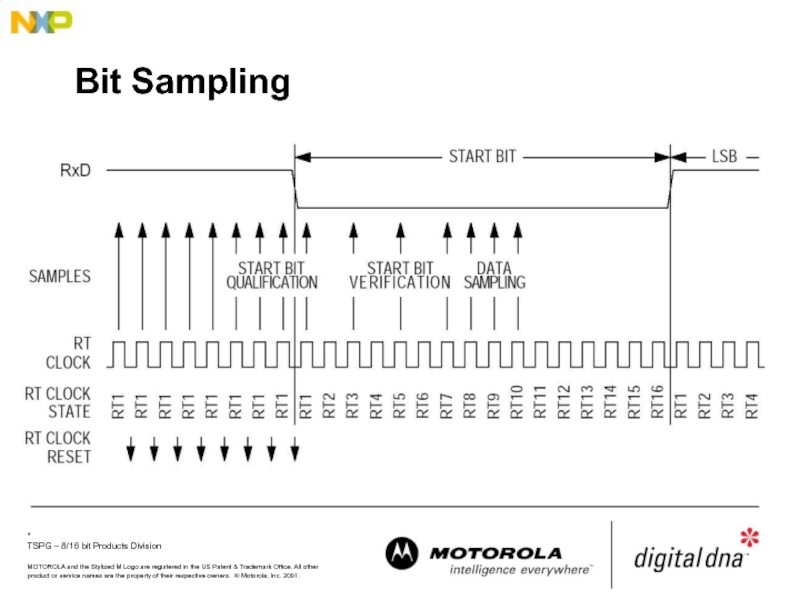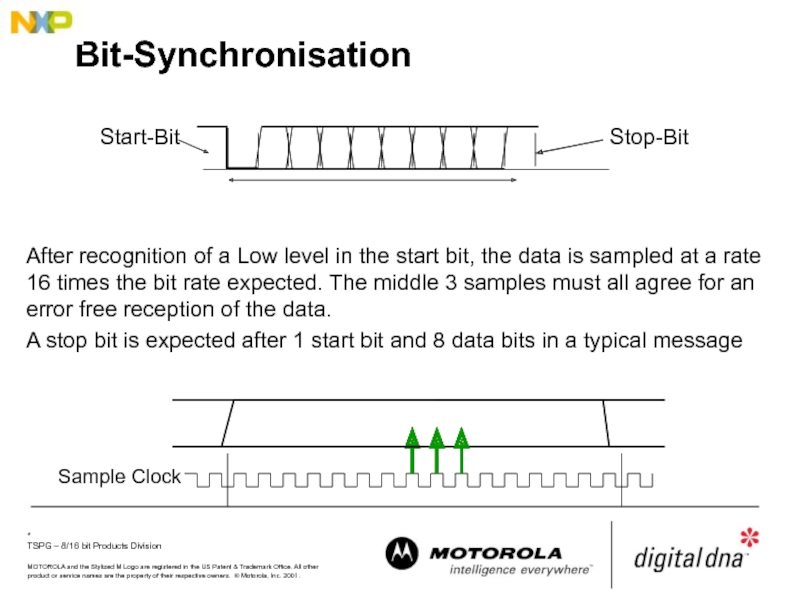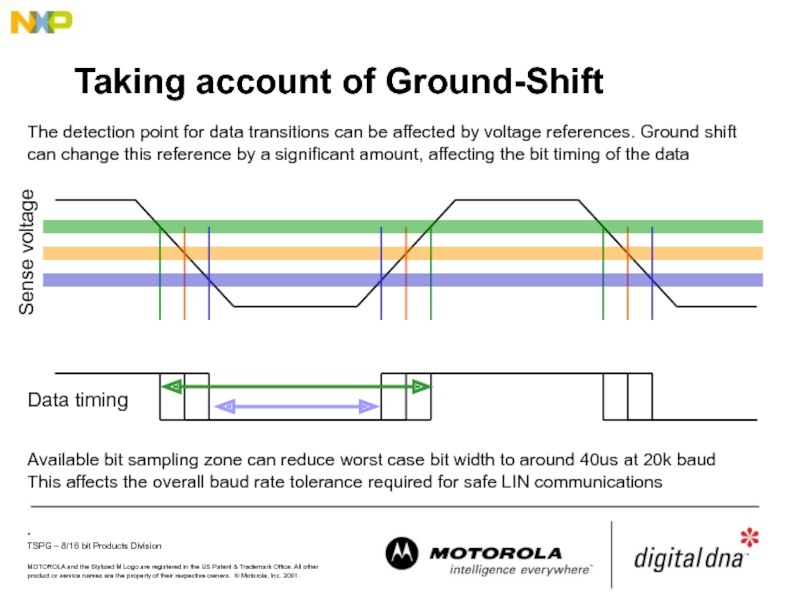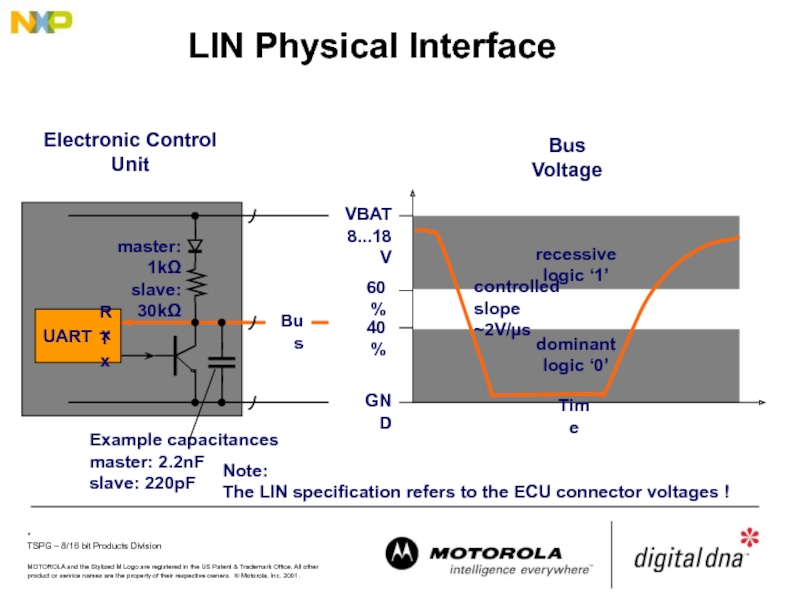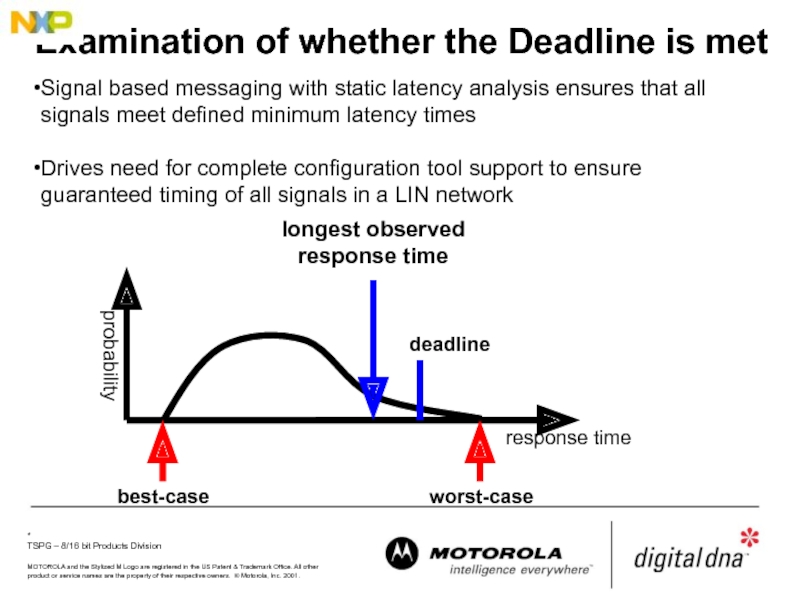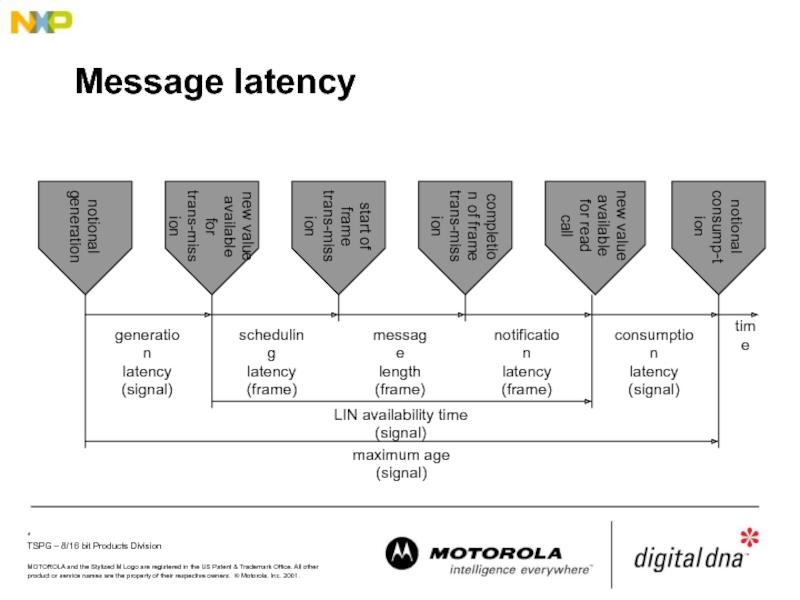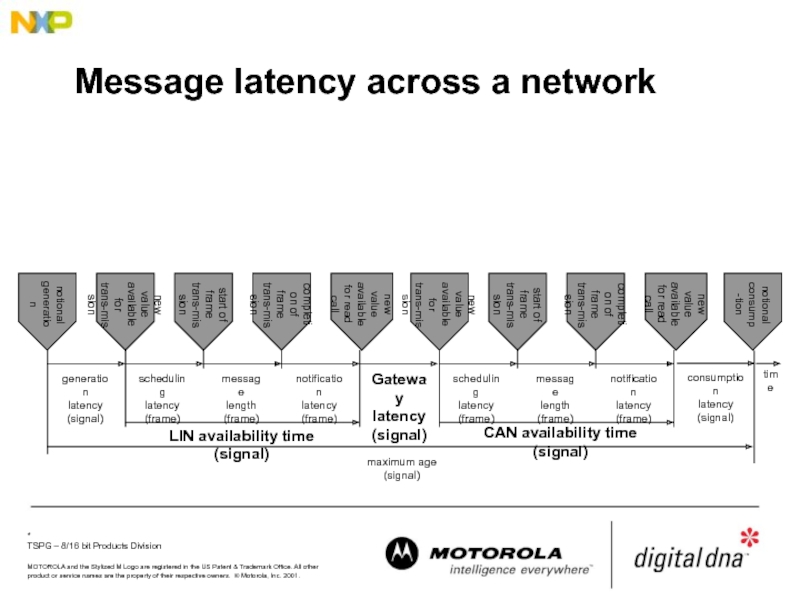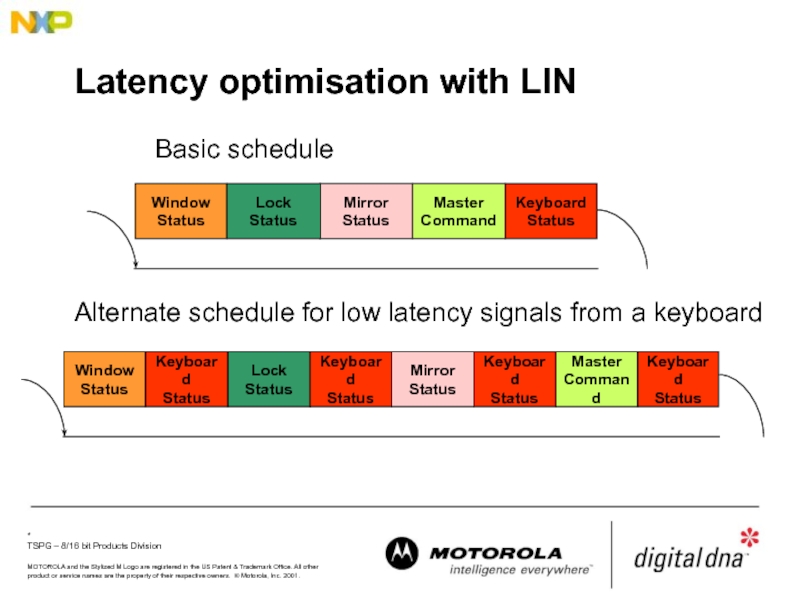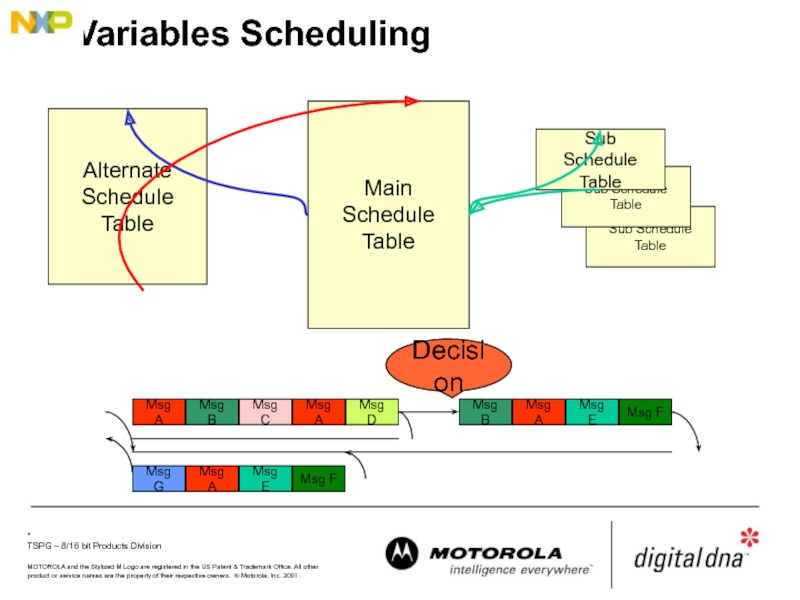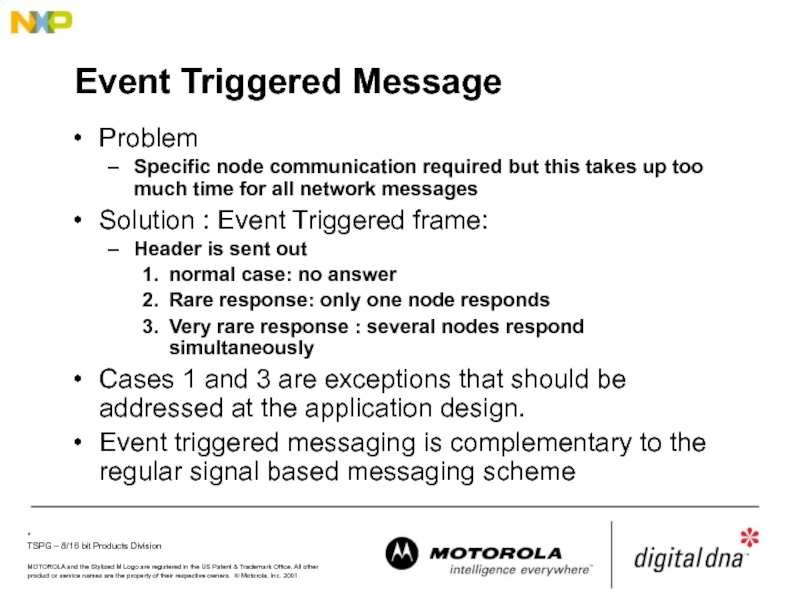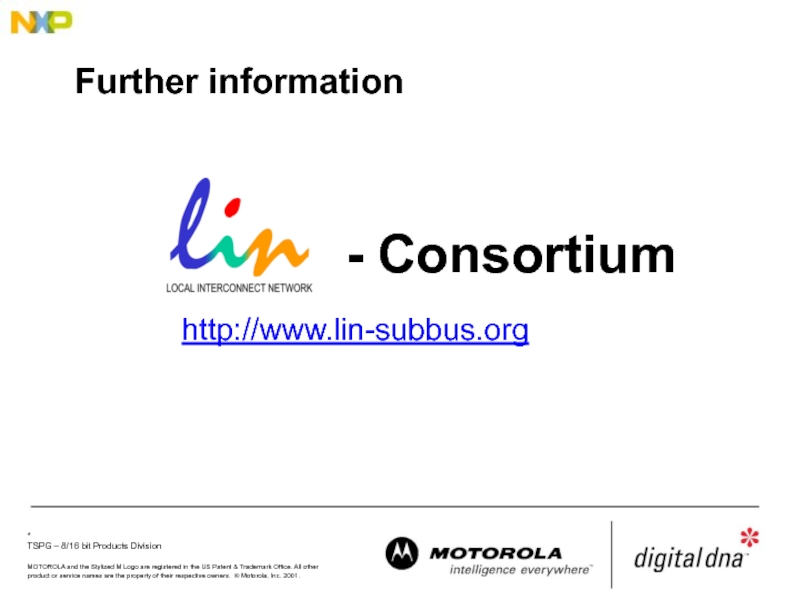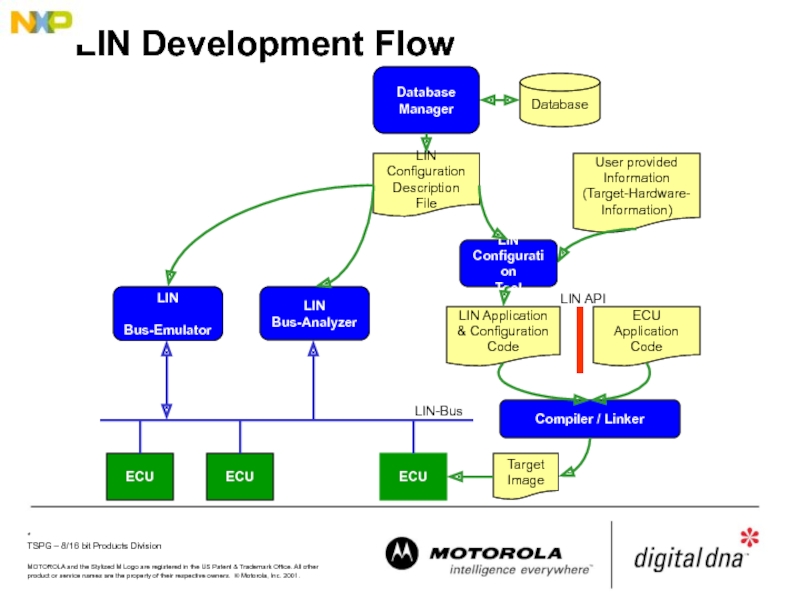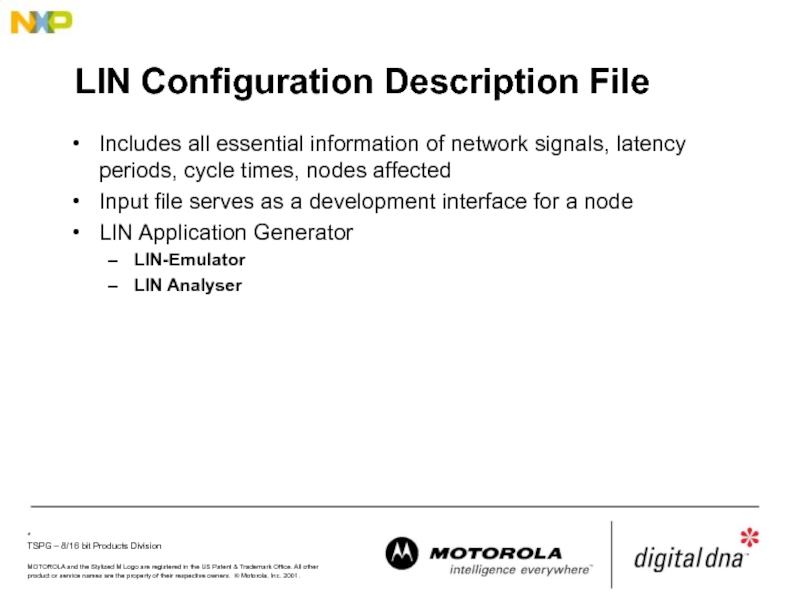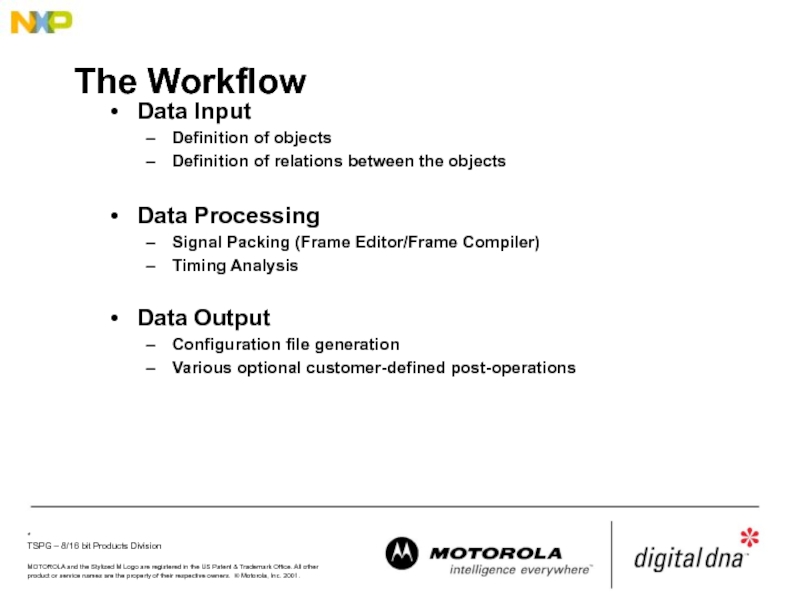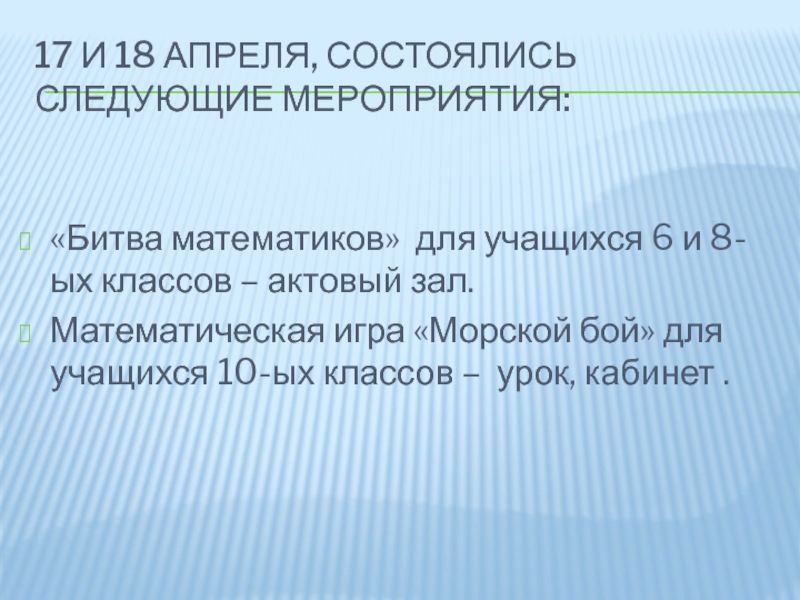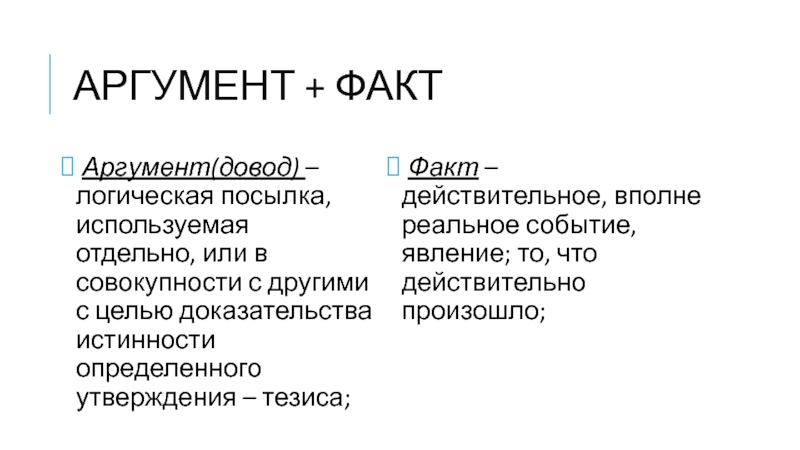- Главная
- Разное
- Дизайн
- Бизнес и предпринимательство
- Аналитика
- Образование
- Развлечения
- Красота и здоровье
- Финансы
- Государство
- Путешествия
- Спорт
- Недвижимость
- Армия
- Графика
- Культурология
- Еда и кулинария
- Лингвистика
- Английский язык
- Астрономия
- Алгебра
- Биология
- География
- Детские презентации
- Информатика
- История
- Литература
- Маркетинг
- Математика
- Медицина
- Менеджмент
- Музыка
- МХК
- Немецкий язык
- ОБЖ
- Обществознание
- Окружающий мир
- Педагогика
- Русский язык
- Технология
- Физика
- Философия
- Химия
- Шаблоны, картинки для презентаций
- Экология
- Экономика
- Юриспруденция
Lin protocol description. Automotive body network презентация
Содержание
- 1. Lin protocol description. Automotive body network
- 2. LIN Sub Bus W. Specks, H.-C. Wense Automotive Body Network
- 3. Typical LIN Applications
- 4. MUX Standards (Costs and Speeds) Speed
- 5. LIN Consortium Daimler- Chrysler AUDI VW
- 6. LIN Standard - Overview Software Level Hardware
- 7. Hierarchical Network Structure Flat Network CAN
- 8. Sub-Network: LIN vs. CAN ECU & Gateway
- 9. SubNets Necessary to reduce Busload on
- 10. Sub Bus Concept Basic Requirements: Satisfy Need
- 11. LIN Concept Technical Solution Low cost single-wire
- 12. Master / Slave Protocol Master Task Determines
- 13. Master / Slave Protocol Master has control
- 14. Master/Slave Protocol Slave Is one of 2-16
- 15. LIN protocol offers message timing predictability
- 16. Data Transmission
- 17. Message Frame Synch Byte: Specific Pattern for
- 18. Identifier The identifier field is sent by
- 19. LIN Message Frame
- 20. LIN Communication - Data from Slave to
- 21. LIN Communication - Data from Master to Slave(s)
- 22. LIN Communication - Data from Slave
- 23. LIN Message Frame synch break ≥ 13
- 24. Frame Synchronisation (1) Initial conditions: +/- 4%
- 25. Frame Synchronisation (2) Initial conditions: +/- 15%
- 26. Bit-Synchronisation A start bit transition to a
- 27. Bit Sampling
- 28. Bit-Synchronisation After recognition of a Low level
- 29. Taking account of Ground-Shift The detection point
- 30. LIN Physical Interface VBAT
- 31. Examination of whether the Deadline is met
- 32. Message latency
- 33. Message latency across a network notional generation
- 34. Latency optimisation with LIN Window Status Master
- 35. Sub Schedule Table Variables Scheduling Main
- 36. Event Triggered Message Problem Specific node communication
- 37. Further information http://www.lin-subbus.org - Consortium
- 38. LIN Development Flow Database Manager Database LIN
- 39. LIN Configuration Description File Includes all essential
- 40. The Workflow Data Input Definition of objects
Слайд 4MUX Standards (Costs and Speeds)
Speed [bit/s]
Byteflight
optical bus
LIN
master-slave
single wire bus
no quartz
CAN-B
event triggered
fault
dual wire
CAN-C
event triggered
dual wire
TTx (in definition)
time triggered
fault tol, dependable
2x2 wire
25.6M
20K
2M
1M
125K
incremental cost per node [$]
D2B, MOST
token ring
optical bus
1
2
4.5
10
LIN Fits in at the low end of in car multiplexing, making a LIN system a cost effective solution
Слайд 5
LIN Consortium
Daimler-
Chrysler
AUDI
VW
Volvo
BMW
LIN
Spec
VCT
Consortium formed in 1998.
Five Car manufacturers
ONE Semiconductor Supplier (Motorola)
One tool
Specification finalised on 02/02/00
Official Launch at SAE March ‘00
Open Specification.
Motorola Ready to support LIN with extensive
device families and new parts already in the
discussion/ spec finalization loop.
First dedicated LIN part available Q3 ‘00
Слайд 6LIN Standard - Overview
Software
Level
Hardware
Level
Tools
ECU
(LIN relevant functions only)
Operating System
Bus Transceiver
Application
Communication Manager
Vehicle Network
LIN
LIN Protocol Specification
LIN Physical Layer Spec.
LIN Config. Language
Signal Database
Manager (SDM/L)
Bus Analyzer
(LINSpector)
Network Configuration
Generator (LCFG)
LIN Physical Layer Spec.
LIN Config Language
LIN Conformance Test Specification
LIN Recommended Use of Messages and Identifiers
Слайд 7Hierarchical Network Structure
Flat Network
CAN
Automotive Standard Bus
Compatible with Main Bus
Expensive (Die Size/
Hierarchical Network
Subnets are necessary to reduce Busload on main Bus
Solution examples:
Слайд 8Sub-Network: LIN vs. CAN
ECU & Gateway
CAN
SCI
Satellite 1
SCI
Satellite 2
LIN phys IF
SCI
LIN phys
Satellite 3
SCI
LIN phys IF
Satellite 4
SCI
LIN phys IF
LIN phys IF
ECU & Gateway
CAN
Satellite 1
Satellite 2
Satellite 3
Satellite 4
CAN
CAN
CAN
CAN
LIN
Dual Wire CAN
Cost Factors: CAN Module Dual Wire Interface
Crystal 5V supply for bus
2nd Wire / Connector
CAN phys IF
CAN phys IF
CAN phys IF
CAN phys IF
CAN phys IF
CAN
phys
IF
5V
5V
5V
5V
5V
5V
Слайд 9
SubNets
Necessary to reduce Busload on main Bus
Solutions
CAN
Automotive Standard Bus
Compatible
Expensive (Die Size/ Dual Wire)
Serial Sub Bus
no standard Bus System
not compatible with Main Bus
inexpensive
SCI-Based: Interface exists even on cheap devices
Interface can easily be reconstructed by ASIC or CPLD
Слайд 10Sub Bus Concept
Basic Requirements:
Satisfy Need for a Standard for Sub Busses
Cost
Reliability: Same Level as CAN expected
Long Term Solution
Logical Extension to CAN
Scalable: Capability to extend Systems with additional nodes
Lowering Cost of Satellite nodes:
No Crystal or Resonator
Easy implementation
Simple State Machines
Low Reaction Time (100 ms max)
Predictable Worst Case Timing
Слайд 11LIN Concept
Technical Solution
Low cost single-wire implementation (enhanced ISO 9141)
Speed up to
Single Master / Multiple Slave Concept
No arbitration necessary
Low cost silicon implementation based on common UART/SCI interface hardware
Almost any Microcontroller has necessary hardware on chip
Self synchronization without crystal or ceramics resonator in the slave nodes
Significant cost reduction of hardware platform
Guaranteed latency times for signal transmission (Predictability)
Слайд 12Master / Slave Protocol
Master Task
Determines order and priority of messages.
Monitors
Serves as a reference with its clock base (stable clock necessary)
Receives Wake- Up Break from slave nodes
Slave Task
Is one of 2-16 members on the bus
Receives or transmits data when an appropriate ID is sent by the master.
The node serving as a master can be slave, too!
Слайд 13Master / Slave Protocol
Master
has control over the whole Bus and Protocol
The
sends Sync Break
sends Sync Byte
sends ID-Field
monitors Data Bytes and Check Byte, and evaluates them on consistance
receives WakeUp Break from slave nodes when the bus is inactive and they request some action.
serves as a reference with it’s clock base (stable clock necessary)
Слайд 14Master/Slave Protocol
Slave
Is one of 2-16 Members on the Bus and receives
Slave snoops for ID.
According to ID, slave determines what to do.
either receive data
or transmit data
or do nothing.
When transmitting the slave
sends 1, 2, 4, or 8 Data Bytes
sends Check-Byte
The node serving as a master can be slave, too!
Слайд 15LIN protocol offers message timing predictability
Time Triggered Approach
Message Length
Number of transmitted data bytes is known → minimum length can be calculated
Each Message has length budget of 140% of it’s minimum length → maximum allowed length is known → distance between beginning of two messages
Слайд 17Message Frame
Synch Byte:
Specific Pattern for Determination of Time Base
(Determination of the
A Synch Byte precedes any Message Frame
ID-Field:
Message Identifier: Incorporates Information about the sender, the receiver(s), the purpose, and the Data field length. Length 6 Bit. 4 classes of 1/2/4/8 Data Bytes. The length coding is in the 2 LSB of the ID-Field. Each class has 16 Identifiers. A total of 64 Message Identifiers are possible.
2 Parity Bits protect this highly sensitive ID-Field.
Слайд 18Identifier
The identifier field is sent by the master node to all
This identifier normally contains one of 64 different values and includes 2 parity bits in the 8 bit data
The identifier is normally associated with a collection of signals that are subsequently transmitted on the LIN bus
In a specific case this can initiate SLEEP mode in the LIN slave nodes – in this case no further data is transmitted on the LIN bus
synch break
≥ 13 bit
synch field
identifier
message header
Слайд 20LIN Communication - Data from Slave to Master
Single-master / multi-slave protocol
Time
Identifier denotes message content, not physical address
Multicast messages
Baud rate synchronization through protocol
Power saving sleep mode
Слайд 22
LIN Communication - Data from Slave to Slave
Slave Node A
Slave Task
Slave Task Rec
Slave Node B
Slave Task Trans
Slave Task Rec
Слайд 23LIN Message Frame
synch break
≥ 13 bit
synch field
identifier
message header
Synchronisation
frame
Synchronisation field
Identifier byte
Message
Слайд 24Frame Synchronisation (1)
Initial conditions: +/- 4% baud rate accuracy relative the
A standard transmission of data will require matched send and receiver baud rates
Stop bit
Start-Bit
Standard UART byte
A normal UART with <4% baud rate error will read back the data correctly
Слайд 25Frame Synchronisation (2)
Initial conditions: +/- 15% baud rate accuracy relative the
A synch break must be at least 13 bit periods in duration to allow for this initial variation in oscillator accuracy within the LIN slave
Start-Bit
Normal UART message
Master sends a break (13 bits period duration or more)
A slow LIN slave may see fewer bit periods
1
2
11
1
10
13
Слайд 26Bit-Synchronisation
A start bit transition to a low logic level (dominant) indicates
Stop-Bit
Start-Bit
Data is sampled in the middle of the bit field:
Sample Clock
Слайд 28Bit-Synchronisation
After recognition of a Low level in the start bit, the
A stop bit is expected after 1 start bit and 8 data bits in a typical message
Слайд 29Taking account of Ground-Shift
The detection point for data transitions can be
Data timing
Sense voltage
Available bit sampling zone can reduce worst case bit width to around 40us at 20k baud
This affects the overall baud rate tolerance required for safe LIN communications
Слайд 30LIN Physical Interface
VBAT
8...18V
GND
UART
Rx
Tx
Electronic Control Unit
master: 1kΩ
slave: 30kΩ
Bus
controlled slope
~2V/µs
Note:
The LIN specification
Слайд 31Examination of whether the Deadline is met
response time
probability
worst-case
longest observed
response time
best-case
deadline
Signal based
Drives need for complete configuration tool support to ensure guaranteed timing of all signals in a LIN network
Слайд 33Message latency across a network
notional
generation
new value available for trans-mission
new value available
start of frame trans-mission
completion of frame trans-mission
generation
latency
(signal)
time
consumption
latency
(signal)
message
length
(frame)
scheduling
latency
(frame)
notification
latency
(frame)
LIN availability time (signal)
maximum age (signal)
new value available for trans-mission
new value available for read call
start of frame trans-mission
completion of frame trans-mission
message
length
(frame)
scheduling
latency
(frame)
notification
latency
(frame)
Gateway
latency
(signal)
CAN availability time (signal)
notional
consump-tion
Слайд 34Latency optimisation with LIN
Window
Status
Master
Command
Mirror
Status
Lock
Status
Keyboard
Status
Window
Status
Lock
Status
Keyboard
Status
Keyboard
Status
Basic schedule
Alternate schedule for low latency signals from
Слайд 35Sub Schedule Table
Variables Scheduling
Main
Schedule Table
Sub Schedule Table
Sub
Schedule Table
Alternate
Schedule
Слайд 36Event Triggered Message
Problem
Specific node communication required but this takes up too
Solution : Event Triggered frame:
Header is sent out
normal case: no answer
Rare response: only one node responds
Very rare response : several nodes respond simultaneously
Cases 1 and 3 are exceptions that should be addressed at the application design.
Event triggered messaging is complementary to the regular signal based messaging scheme
Слайд 38LIN Development Flow
Database
Manager
Database
LIN
Configuration
Description File
LIN
Configuration
Tool
User provided
Information
(Target-Hardware-
Information)
LIN Application
& Configuration
Code
ECU Application
Code
LIN
Bus-Analyzer
Target
Image
Compiler / Linker
LIN API
LIN-Bus
ECU
LIN
ECU
ECU
Слайд 39LIN Configuration Description File
Includes all essential information of network signals, latency
Input file serves as a development interface for a node
LIN Application Generator
LIN-Emulator
LIN Analyser
Слайд 40The Workflow
Data Input
Definition of objects
Definition of relations between the objects
Data Processing
Signal
Timing Analysis
Data Output
Configuration file generation
Various optional customer-defined post-operations
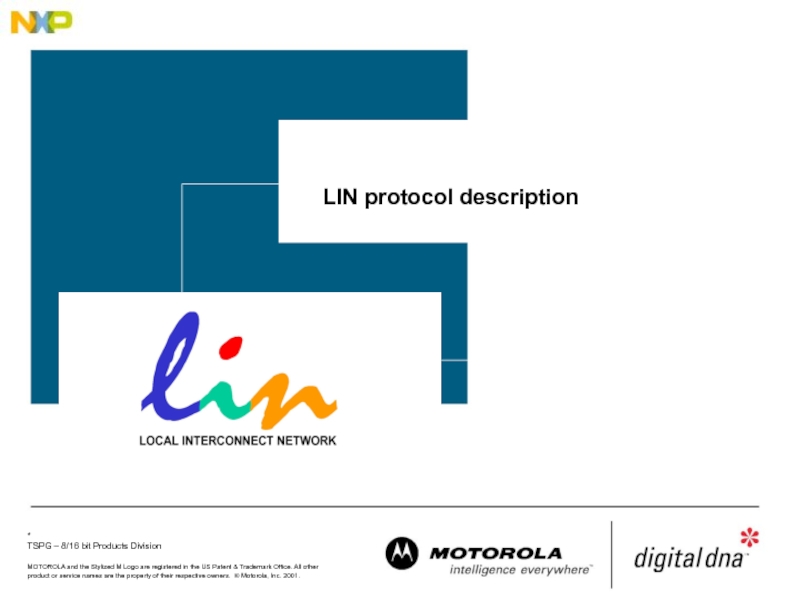
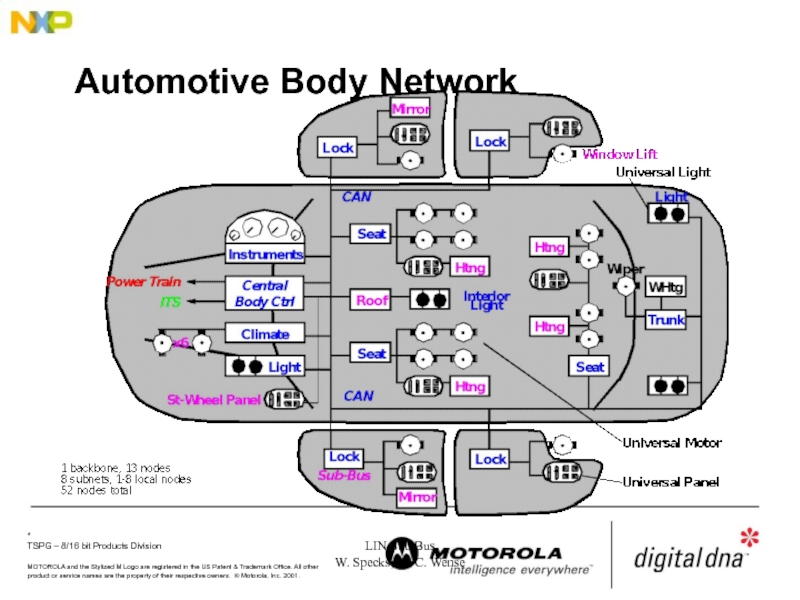
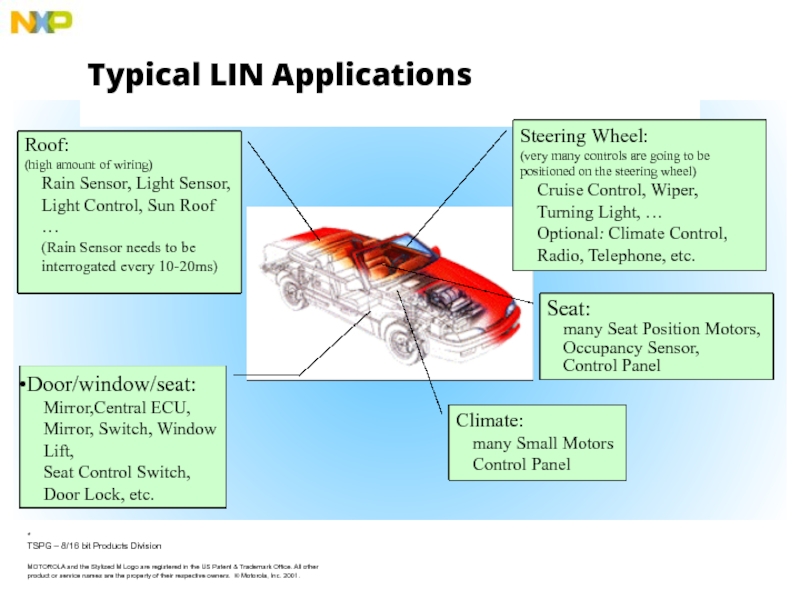
![MUX Standards (Costs and Speeds)Speed [bit/s]Byteflightoptical busLINmaster-slavesingle wire busno quartzCAN-Bevent triggeredfault tolerantdual wireCAN-Cevent triggereddual wireTTx](/img/tmb/5/426468/4702a86528866fd0ad21699b73e9a303-800x.jpg)
